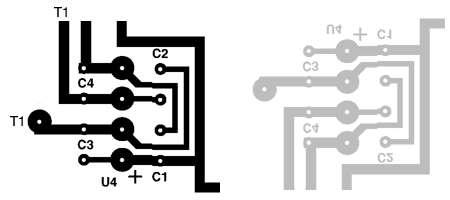ofb
100+ Head-Fier
- Joined
- Sep 22, 2002
- Posts
- 124
- Likes
- 10
okay, this is a classic case of the eraser wearing out before the pencil, so i'd best ask for help. i'm looking at the circuit diagram for the SDS psu and its pcb.
http://headwize2.powerpill.org/proje...stokes_prj.htm
i'm trying to understand how the circuit relates to the legs of the rectifier bridge. it seems clear to me that the inner legs are for the ac, and the outer two are the dc. but look at c1 and c2 on the pcb. ... shouldn't they be linking an outer leg and an inner leg each? is the pcb not showing c2 links the inner legs and c1 the outer legs?
what am i screwing up here?
http://headwize2.powerpill.org/proje...stokes_prj.htm
i'm trying to understand how the circuit relates to the legs of the rectifier bridge. it seems clear to me that the inner legs are for the ac, and the outer two are the dc. but look at c1 and c2 on the pcb. ... shouldn't they be linking an outer leg and an inner leg each? is the pcb not showing c2 links the inner legs and c1 the outer legs?
what am i screwing up here?




